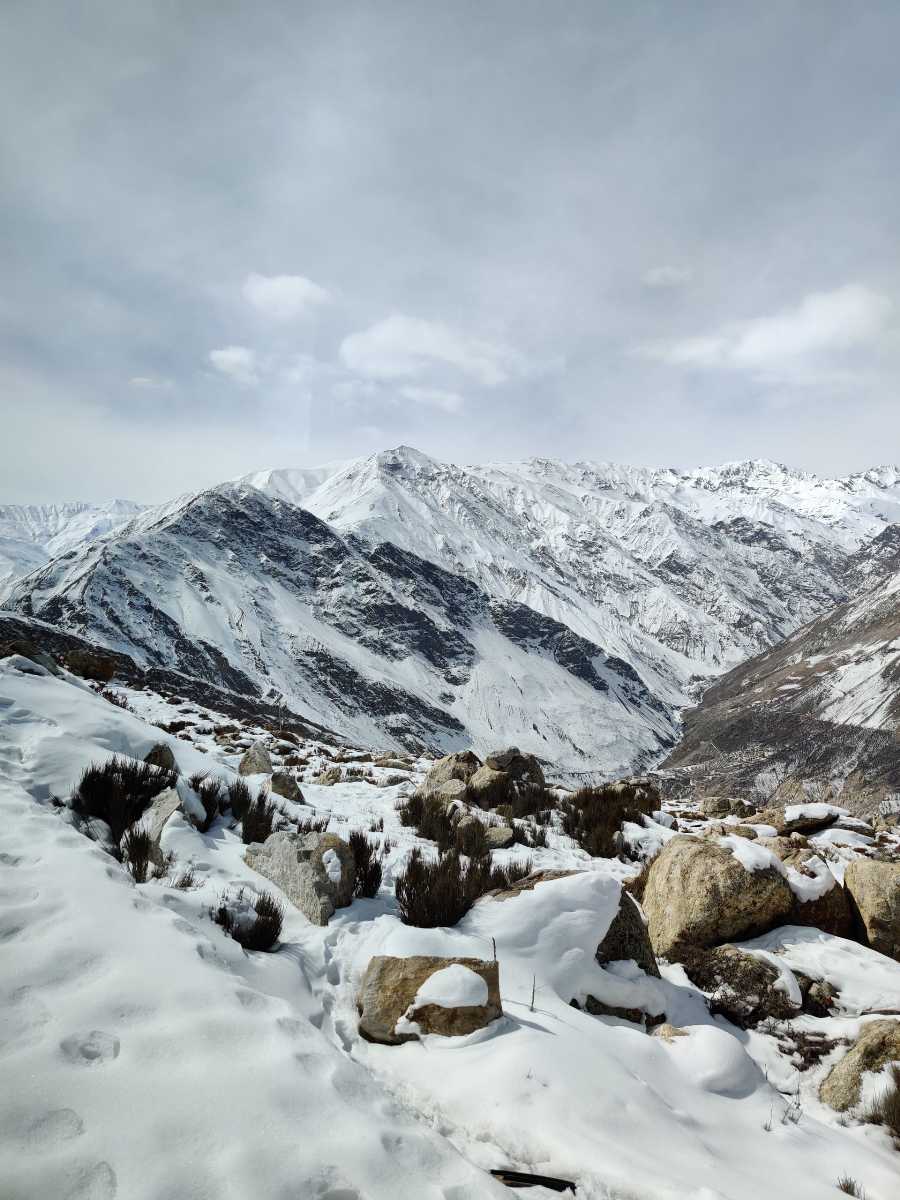

A Glimpse Of Spiti Valley In Winters | A Photo Blog
From snow-covered landscapes to tranquil monasteries, breathtaking landscapes, and a chance to spot the elusive snow leopards, this article will take you on an enchanting Spiti Valley Tour, during the serene winter months.
It’s just about a couple of days since we came down to the plains and not yet fully ready to embrace the city life. We are still drooling over the white-washed world where we spent the last week, gasping for breath as we walked through the snow-laden mountain trails, sipping on endless cups of ‘chai’, adoring the views of nature and laughing out loud with our friends, sitting around the fireplace that kept the room warm at Zotpa Homestay in Kibber.

A Glimpse Of Spiti Valley In Winters
Our first encounter with this pristine Himalayan valley was in October 2017, when Autumn was flickering and all set to pave the way for the arrival of Winter. We had heard stories about how the entire valley gets covered in a thick veil of snow and life often comes to a standstill. There have been several times when we would browse through YouTube videos or scroll down the Instagram feed to see how mystic Spiti looks like when the temperature drops down to as low as -40 degrees Celcius.
But it took us quite some time to finally plan and traverse across the Winter Wonderland of Spiti, tucked amidst the mighty Himalayas.
To be honest, nobody can describe Spiti Valley better than Rudyard Kipling when he says:
“At last, they entered a world – a valley of leagues where the high hills were fashioned of the mere rubble and refuse from off the knees of the mountains… Surely the Gods live here. Beaten down by the silence and the appalling sweep of dispersal of the cloud shadows after rain. This place is no place for men.”

Spiti, known to be ‘The Middle Land’ between India & Tibet, experiences a harsh winter that stretches from November till March, and not many people dare to visit during the freezing season. As we embarked on our Winter Spiti Expedition with The Doi Host, our friends Disha & Sambit had already told us that only basic amenities would be available, the hotels would be shut down due to no supply of water (the pipelines get frozen) but the homestays would be functioning, giving us the authentic feel of living with the locals of the valley.
During our week-long journey, we crossed some popular hill stations like Shimla and Sarahan, and traversed across treacherous roads with snow-clad mountains soaring high around us and crystal clear rivers accompanying throughout. We stopped at places – sometimes, to click photographs of icicles hanging from rocks and at times, to just stretch our legs and walk around the snowfields, feeling the chills in the air.
The Nako Lake, which used to turn orange with the rays of the setting sun during the summer months, was now absolutely white and we, 6 happy souls, jumped and hopped over the frozen lake as if we were kids from Kindergarten! Our happiness knew no bounds! We also had a chance to explore the Kaza Monastery, Tabo Monastery (the oldest monastery in the valley) & Key Monastery (the largest & most popular monastery in the valley), which are open during the winter and allow travelers to get a sneak peek & experience the way the monks live in the cold weather. As the sound of silence lingered around us, we sought a moment of warmth inside Key where the monks offered us tea!

And then, it seemed that this wasn’t all and we had more in store for us! Dorjee, our guide from Lossar joined us in Kaza, raising our hopes of spotting some rare species living in this part of the world. It wasn’t even an hour since he boarded the vehicle, and we saw a Himalayan Red Fox, being chased by a dog! (Sounds surprising, right?!) Well, no clue, if it was our destiny, or Dorjee knew some magic…we saw another Red Fox, right next to the road as we crossed Chicham Bridge, that day. It didn’t just end there. Over the next couple of days, we saw Blue Sheep, Ibex, Himalayan Griffins, Bearded Vultures, and of course, SNOW LEOPARDS!

Ah well, spotting the Snow Leopards wasn’t as easy as it might sound like! These shy cats are super skilled in camouflaging themselves, and we had to wait for nearly 6 hours to finally get a good view of a pack – a mother with 3 cubs. We were on one side of a cliff that had about 6 inches of snow, the temperature was -15 degrees Celcius, and the sun shone bright on our faces.
Dorjee and other guides kept motivating us, as they were sure that the wild cats would sneak out of the cave at some point in time – and we believed in Dorjee (and our fate!). eagerly waited until dusk, when we finally got to see them. To put it in Sambit’s words, only 1% of the world’s population gets to see Snow Leopards in the wild, and we are amongst that 1% now!!
That day seemed like one of the longest days of our lives, yet our hearts filled with amusement. As it slowly started getting dark, the temperature dropped rapidly and our senses started getting numb. There was a weird sense of gratefulness – for being alive to witness such miracles of nature; for being strong enough to deal with breathlessness at 15,000 ft; for being surrounded by such humble people; and for having such beautiful friends who cared enough to let us be a part of this journey.

There were times when we felt as if we were dreaming. Everything around us was picture-perfect & appeared surreal. Looking in the mirror now, as we see our tanned faces with a burnt nose, we know that the days we’ve lived in the higher altitudes with sunkissed mornings & starlit nights are more than real – something more than the usual!
If you think you want to step out of your comfort zone and live with basic means, go without bathing for a few days, eat warm home-cooked food with the locals, and make memories of a lifetime – then you must experience the breathtaking beauty of Spiti Valley during winters.
Here’s to Disha, Sambit, Mrinal, Ankita, Angrup Bhaiya, Dorjee, Lama Tenzing, Rakesh & everyone else who touched our lives, sprinkled enough happiness during our journey and helped us weave the best mountain memories ever!



















